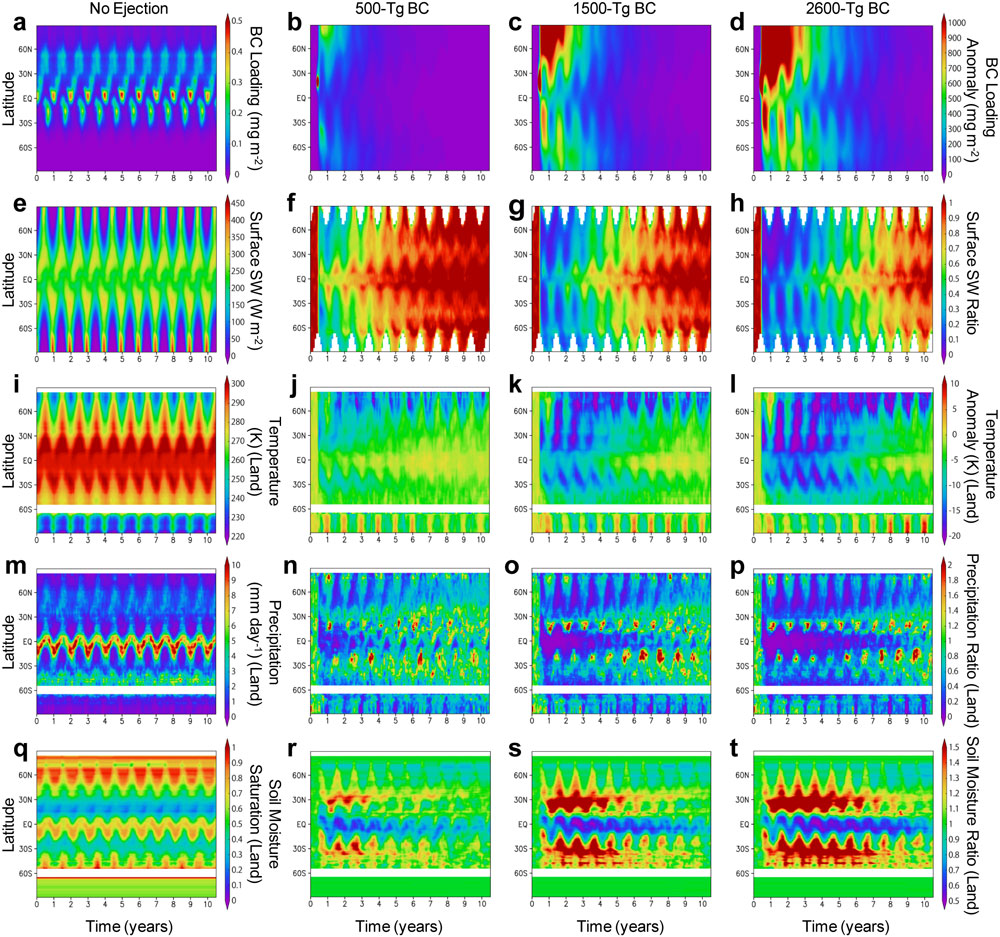Research Abstract
K-Pg境界で生成したすすによって促進された全球規模の気候変動が大量絶滅の原因である
Global climate change driven by soot at the K-Pg boundary as the cause of the mass extinction
2016年7月14日 Scientific Reports 6 : 28427 doi: 10.1038/srep28427

6600万年前の白亜紀/古第三紀(K-Pg)境界で起こった生物大量絶滅は、恐竜や浅海性生物の絶滅により特徴づけられ、哺乳類の大進化や人類の出現につながったことからも重要である。この大量絶滅を説明する現行の仮説によれば、現在のメキシコに小惑星が衝突したことで成層圏に高濃度エアロゾルが生成し、その結果、光合成が行えなくなり、全球がほぼ凍結状態になったとされる。今回我々は、この小惑星衝突で成層圏に生成したエアロゾルは地表を真っ暗にするほどではなく、寒冷化もこれまで考えられていたよりも弱かったことを示す。成層圏に放出された大量のすすが、緯度によって差のある気候変動を引き起こし、それが白亜紀/古第三紀(K-Pg)境界の陸および海の生物の絶滅や生き残りの状況を説明できるという新たな仮説をここに提案する。成層圏のすすは、小惑星の衝突によって油分の多い地域から放出され、全球に拡散した。このすすエアロゾルは、陸上の中-高緯度地域にはかなりの気候寒冷化を、低緯度には干ばつと共に緩やかな低温化をもたらし、それに加えて、小惑星衝突の遅くとも数カ月後から衝突の2年後までの間に全球の海洋において光合成帯が減衰し、その後、数年で全球海洋の表層水の低温化が起こった。こうした急速な気候変動が陸上生物の大量絶滅を招き、その後、海洋生物の大量絶滅が数年にわたって起こった。
Corresponding Author
The mass extinction of life 66 million years ago at the Cretaceous/Paleogene boundary, marked by the extinctions of dinosaurs and shallow marine organisms, is important because it led to the macroevolution of mammals and appearance of humans. The current hypothesis for the extinction is that an asteroid impact in present-day Mexico formed condensed aerosols in the stratosphere, which caused the cessation of photosynthesis and global near-freezing conditions. Here, we show that the stratospheric aerosols did not induce darkness that resulted in milder cooling than previously thought. We propose a new hypothesis that latitude-dependent climate changes caused by massive stratospheric soot explain the known mortality and survival on land and in oceans at the Cretaceous/Paleogene boundary. The stratospheric soot was ejected from the oil-rich area by the asteroid impact and was spread globally. The soot aerosols caused sufficiently colder climates at mid–high latitudes and drought with milder cooling at low latitudes on land, in addition to causing limited cessation of photosynthesis in global oceans within a few months to two years after the impact, followed by surface-water cooling in global oceans in a few years. The rapid climate change induced terrestrial extinctions followed by marine extinctions over several years.

